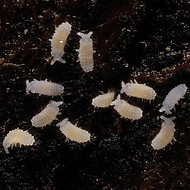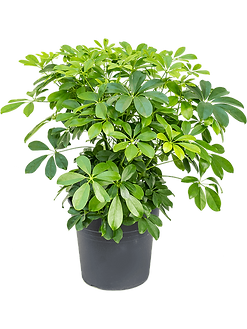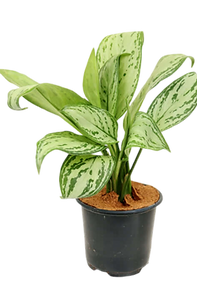BEHAVIOR
Crested geckos are often considered a beginner's reptile
since they're not very complex, but like any other animal,
it is important that its parameters and conditions are respected so that
their behavior is optimal and that they're doing as good as possible.
They're generally friendly, but in the eventuality that a gecko is nervous or frightened,
which is quite rare but could still happen, they will tend to bite,
It’s not painful but surprising.
To avoid bites, it is also strongly recommended to wash your hands if you have several geckos and you handle them one after the other.
If they're handled regularly (around 30 minutes per day in a relatively calm environment) they may come to recognize you and eat from your hand.
All geckos that I produced or adopted as juveniles were raised this way to
facilitate handling. It will still be important to avoid handling as much
as possible in the first few weeks to allow them to acclimatize to their new habitat.
The crested gecko is crepuscular, so they will sleep during the day
and be active in the evening/night.
Ideally the handling would be done when their awakening cycle has started
to avoid disturbing their sleep as much as possible.
For handling it will also be necessary to provide a safe place.
Since they jump quite frequently and above all, without warning.
Ideally in the beginning and until you get used to it, while sitting
and putting one hand in front the other to catch them when they jumps.
It may be that a moment of stress or surprise causes the loss
of their tail, it will not grow back but they will be able to live just as well without it,
you will simply have to put them in a sterile terrarium for a few days.
CONSERVATION IN CAPTIVITY
For a juvenile, a terrarium of 8x8x12 inches will be adequate
up to 10g to 12g, then a 12x12x18 inches will be adequate
until it reaches 25g to 30g,
at that point an 18x18x24 inches will be necessary and sufficient
for the rest of their lives, otherwise an 18x18x36 would be optimal.
They are arboreal and live in a tropical climate so
it will be very important to provide foliage, branches,
vines, hiding places, etc. All in abundance.
Humidity should be kept at 60-70% at all times and never
drop below 40-50% with peaks up to 90% during spraying.
The best is to spray twice a day, in the morning and evening.
The winter temperature should be between 20 and 22˚C,
while the summer temperature should be between 23 and 26˚C.
It is very important that it never drops below 18˚C
and that it never goes above 28˚C since there is a risk
to cause serious health problems for the gecko.
Lighting is beneficial for their day/night cycle, so between 10 and 12 hours of lighting per day to be adapted according to the summer and winter season.
Opinions are divided on the need for a UVB bulb,
personally I prefer to provide it but it is also possible to replace UVB with a vitamin D3 supplement in their diet so
calcium + D3, I will go into more detail in the nutrition section
As for cohabitation, another subject on which opinions are divided,
straight away I would say not to consider this an option.
The only ones who manage to do this while minimizing the risks – since it is never safe regardless of the precautions – are certain breeders
and connoisseurs of the species, so otherwise it is definitely to be avoided.
18x18x24
12x12x18
OR
NUTRITION
In terms of food, there are several options, the most popular being Repashy and Pangea,
both are food powders (to which water must be added
to make a puree) which constitute a complete diet since they contain all
the minerals and vitamins they need. It is important to remove the diet
from the terrarium after a maximum of 36 hours to avoid poisoning.
Personally I prefer Pangea and it is what I use for all my geckos, both for my adults
and my juveniles. I find it important to vary the flavors and Pangea produces 7 different ones including 3 with insects if you prefer
do not feed live or for geckos who have no interest in live insects
since it is quite common for some geckos to lose interest in adulthood.
For insects, all the juveniles here eat crickets (also produced here)
who are fed only good quality vegetables.
The diet of crested geckos is generally made up of 75% of the diet and 25% of insects.
It is also possible to give them butter, wax or meal worms.
As for supplements, it is necessary to sprinkle the crickets and worms with calcium powder
(if you do not provide UVB it will be calcium + D3) and vitamins alternating from one to the other every week to help avoid constipation.
For hydration, a bowl of water will not be necessary since they will drink on the windows and leaves. It is important to use ReptiSafe in the water (instant terrarium water conditioner) since tap water is not suitable for them.
The conditioner will therefore eliminate chloramines and chlorine, detoxify ammonia and nitrites, and provide essential ions as well as electrolytes which help hydrate.




































SETUP OF THE TERRARIUM
To set up a bioactive terrarium, we start with
the drainage layer. There are several materials that we can use but what seems to be the most effective are clay balls, so a bag of ODLA
(5lbs) for an 18x18x24 terrarium, or half (2.5lbs) for a 12x12x18.
This allows excess water to not accumulate in the substrate,
therefore to keep the roots of the plants in good condition and not to create harmful bacteria.
To prevent the substrate from mixing with the drainage layer,
simply put a piece of mosquito net cut to the dimensions of the terrarium, between the drainage and the substrate.
For the substrate, I use ReptiSoil which is a mixture of peat moss, soil, sand and charcoal. It is a mixture suitable for bioactive terrariums, both in terms of plants, colonies of clean up crew and egg laying. I strongly recommend adding a few handfuls of rehydrated sphagnum moss to help maintain a good humidity after watering and which will also serve as a moist hiding place for springtails and isopods.
(It is possible to obtain just enough substrate, moss
and clay balls for a 12x12x18/24 or 18x18x24/36 terrarium
directly here for only $30/$60! )
In terms of plants, I use Pothos (Epipremnum Aureum),
Snake Plants (Sansevieria) Umbrella Plants (Schefflera Arboricola),
several kinds of Aglaonemas, etc. Bromeliads,
Ferns, and Spider Plants (Chlorophytum Comosum)
are also good terrarium options.
For clean up crew colonies, a container of springtails as well as
20 to 30 isopods will be ideal. They take care of mold, excrement, etc.
A substrate change will therefore not be necessary, the only maintenance will be to wash the windows occasionally and feed the idopods with dead leaves, decomposing wood, and/or
Morning Wood. Fruits and vegetables are also suitable.
Springtails live on charcoal so ReptiSoil already contains it. However, it is also possible to add some to the substrate if necessary.
A branch and/or a vine to allow them
to climb to height will be necessary, this will allow them
to shed more easily as well.
ARRIVAL OF THE GECKO
To begin, the most important thing will be to ensure that your terrarium is 100% ready to receive your gecko upon their arrival since changes to their terrarium in the first weeks are not recommended given the stress that these changes would cause.
I would advise making the terrarium a few weeks in advance to ensure the turnover of the bioactive and the establishment of ths clean up crew and plants in the new ecosystem, this will also allow the roots to solidify well. It will also be beneficial to water and check
temperature and humidity of it during these few weeks to ensure that
it is adequate when the gecko arrives.
The first weeks following their arrival will be very important but above all decisive, it will be a period of adaptation as much for you as for them,
it will therefore be important to avoid handling if it is not necessary,
this will greatly facilitate acclimatization.
* This sheet has been designed to cover the majority of the information necessary when adopting a crested gecko but you will be able to contact me for any other questions that I have not answered. This is all of the general information that I have collected using qualified breeders and reliable sources to provide them with a lifestyle and habitat where they can thrive.
Each person works differently and it is important to adapt according to their animal. The information it contains reflects the way I proceed,
but it is up to you if you want to proceed otherwise. *













